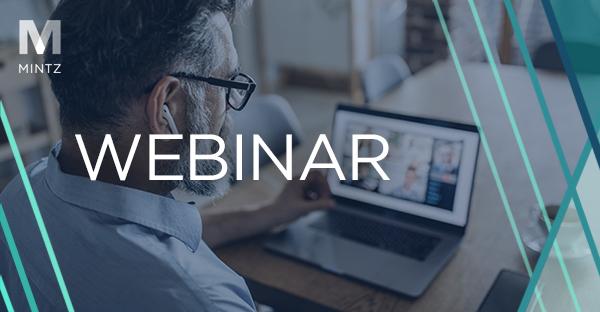
Employment
Viewpoints
Filter by:
The NLRB’s Busy July – A Harbinger of Future Coordinated Federal Action Between the NLRB, FTC, and DOJ
August 15, 2022 | Blog | By Evan Piercey, Tinny Song, Richard Block
In a span of a week the NLRB signed Memoranda of Understanding (“MOU”) with both the Federal Trade Commission and the U.S. Department of Justice’s Antitrust Division. These agreements come just over a year after President Biden issued an “Executive Order on Promoting Competition in the American Economy,” which called on several federal agencies to address competition issues, and included a mandate for agencies to “coordinate, promote, and advance Federal Government efforts to address overconcentration, monopolization, and unfair competition in or directly affecting the American economy.” While the NLRB was not explicitly identified in the Executive Order (and the DOJ and FTC were), these recent partnerships unmistakably indicate that labor issues and anti-competition issues are inextricably linked, and the NLRB’s willingness to collaborate with other federal agencies to carry out its mandate under the National Labor Relations Act. Moreover, these recent efforts also represent a clear step by President Biden to follow through on his campaign promise to strengthen unions, worker organizing efforts, and collective bargaining. Mintz attorneys Evan Piercey, Tinny Song and Richard Block discuss these MOUs in greater detail below and provide some takeaways for employers and business leaders.
California Voters Will Decide PAGA’s Fate at the Ballot Box in 2024
August 10, 2022 | Blog | By Jennifer Rubin, Mike Flesuras
Earlier this year we wrote on the U.S. Supreme Court’s decision in Viking River Cruises, Inc. v. Moriana that struck a major blow to California’s Private Attorneys General Act (“PAGA”). Now on the heels of the Viking River decision, California officials have announced that a proposed law to overhaul PAGA, called the California Fair Pay and Employer Accountability Act (“Act”), will be put on a referendum to the voters in November 2024. The Act proposes in large part to repeal PAGA, including PAGA’s mechanism that allows an employee to sue in civil court on the state’s behalf to enforce the California Labor Code and seek penalties for doing so. Mintz attorneys Jennifer Rubin and Mike Flesuras highlight why PAGA is under fire, what the Act would change, and some key takeaways for employers to combat PAGA lawsuits leading up to the 2024 ballot.
Managing State Law Risks of Employer-Sponsored Abortion-Related Travel Benefits Post-Dobbs
August 8, 2022 | Blog | By Greer Clem , Jennifer Rubin
In previous posts (available here and here) we reported on some of the legal consequences from Dobbs v. Jackson Women’s Health Organization on employer-sponsored group health plan coverage of abortion-related travel benefits. In this post, Mintz attorneys Alden Bianchi, Greer Clem, and Jen Rubin address the larger concern related to the legality of these benefits in the face of a burgeoning number of states seeking to extend their extra-territorial reach to bar or even criminalize individuals who provide abortion-related travel.
EEOC Updates Screening, Testing, and Mandatory Vaccination Policies
July 26, 2022 | Blog | By Danielle Bereznay
After several months, the EEOC has once again updated its guidance and answers regarding the ongoing COVID-19 pandemic’s interaction with anti-discrimination laws, with a particular focus on the workplace screening, testing, and mandatory vaccination policies. This guidance, updated on July 12, 2022, provides important clarifications to Section A (Disability-Related Inquiries and Medical Exams), Section C (Hiring and Onboarding), Section G (Return to Work), and Section K (The ADA and COVID-19 Vaccinations). Mintz Employment Attorney Danielle Bereznay discusses the key details.
Post-Dobbs Abortion-Related Travel Benefits: Surveying Employers’ Options
July 13, 2022 | Blog | By Michelle Capezza, Patricia Moran
Dobbs impacts employer-sponsored group health plan coverage for abortion services in states where abortion is, or becomes, illegal, and abortion-related travel benefits. While our earlier post focused on coverage of abortion and abortion-related travel services under a group health plan, and related ERISA preemption considerations, in this post Mintz attorneys Alden Bianchi, Michelle Capezza and Patricia Moran examine other approaches available to employers that seek to make these benefits available, such as HRAs, health FSAs, excepted benefit EAPs and HSAs.
Health Insurance Maintenance During Massachusetts Paid Family and Medical Leave - Draft Regulations Issued
July 11, 2022 | Blog | By Patricia Moran
The Massachusetts Department of Family and Medical Leave (DFML) recently posted proposed changes to its Paid Family and Medical Leave (MAPFML) regulations. For the time being, these changes are presented as a “draft markup”, with DFML stating its intent to offer a public comment period and/or public hearing at dates to be announced in the coming weeks. Mintz attorney Patricia Moran breaks down what employers need to know in light of these recent updates.
Post-Dobbs – Government Agencies Seek to Provide Guidance
July 7, 2022 | Blog | By Marc Aspis
The Dobbs decision have left consumers, providers and insurers with questions on how it will impact abortion services under health plans. To address this issue, Mintz Employment attorney Marc Aspis discuss the new guidance issued by the Department of Health and Human Services ("HHS") and the HHS Office for Civil Rights regarding access and coverage of reproductive health care and patient privacy and how to incorporate the new guidance into employer group health plans.
Webinar Recording: Cryptocurrency in Employee Benefits and Executive Compensation: Let's Discuss!
June 29, 2022 | Webinar | By Anne Bruno, Michelle Capezza, David Lagasse
Interest in cryptocurrency investments has been increasing at a rapid pace and employers don't want to be left behind. In this webinar, team members from Mintz’s Employee Benefits & Executive Compensation Practice break down key considerations employers face towards designing compensation programs to pay employees in the form of cryptocurrencies.
Group Health Plans in the Crossfire: Facilitating Reproductive Choice in the Wake of Dobbs v. Jackson Women’s Health
June 26, 2022 | Blog | By Jennifer Rubin, Michelle Capezza, Corbin Carter, Michael Arnold
With the Supreme Court’s decision reversing Roe v. Wade, employers may find themselves navigating complex benefits and tax-related issues. Our Employment, Labor & Benefits team examines what employers will confront if they seek to amend group health plans, or adopt new plans, programs or arrangements, in an effort to facilitate employee reproductive choice in a post-Roe v. Wade environment.
News of Recent Layoffs Prompts a Review of the WARN Act: What’s Changed Since 2020?
June 22, 2022 | Blog | By Emma Follansbee
For the first time since the early days of the COVID-19 pandemic, employers are implementing a new wave of layoffs, particularly in the tech world, and it is anticipated that there are more to come as recession worries loom. Mintz attorney Emma Follansbee provides a brief refresher on how the WARN Act applies to plant closings and mass layoffs, and what, if anything has changed since 2020.
The Supreme Court Strikes a Blow to PAGA: What California Employers Need to Know
June 16, 2022 | Blog | By Mike Flesuras, Jennifer Rubin
The U.S. Supreme Court has given businesses with California employees the option (at least for now) to avoid employee-initiated court proceedings under California’s Private Attorneys General Act (PAGA). The California-based members of Mintz’s Employment, Labor & Benefits team share what California employers need to know.
Show or Tell: A Road Map for Board Diversity Laws
June 13, 2022 | | By Jennifer Rubin
Jen Rubin, chair of Mintz’s ESG practice group, explains how two recent court decisions striking down California’s endeavor to diversify corporate boards is a perfect time to rethink—and possibly reframe—such efforts. The focus should be more on disclosure, and not mandates, and be transparent, she says.
EEOC Issues Guidance Addressing How the Use of Artificial Intelligence in Employment Decisions Could Violate the ADA
June 8, 2022 | Blog | By Michelle Capezza, Evan Piercey
This alert covers the key components, concerns, and considerations of the United States Equal Employment Opportunity Commission’s (“EEOC”) recently issued technical guidance, addressing how an employer’s use of software, algorithmic decision-making tools and AI to assist them in hiring workers, monitoring worker performance, determining pay or promotions, and establishing the terms and conditions of employment could violate the Americans with Disabilities Act (“ADA”).
Two Strikes Against Board Diversity: What’s Next for Statutory Governance Initiatives?
May 17, 2022 | Blog | By Jennifer Rubin
California's statutory governance initiatives were dealt another blow after both corporate governance diversity efforts — a female representation mandate and underrepresented community mandates — were struck down. Now that both statutes have been invalidated corporate boards and the stakeholders and communities those boards serve are asking what is next for statutory governance initiatives?
NYC Council Amends Salary Range Transparency Law; Delays Implementation Date
May 3, 2022 | Blog | By Michael Arnold, Corbin Carter, Danielle Dillon
The New York City Council has amended the New York City Salary Range Transparency Act. The Mayor has 30 days to sign the amended law. The Act amended the New York City Human Rights Law, creating an obligation on employers to disclose salary ranges in job advertisements for any position located in New York City.
Massachusetts Supreme Judicial Court Holds That Wages Due Solely Under the Federal Overtime Statute (FLSA) Are Not Trebled Under the Massachusetts Wage Act
April 27, 2022 | Blog | By Brendan Lowd, Danielle Dillon
The Massachusetts Supreme Judicial Court (“SJC”) recently held in Devaney v. Zucchini Gold that employees who prove only a violation of the federal Fair Labor Standards Act (“FLSA”) are not entitled to the automatic treble damages under the Commonwealth’s untimely wage payment statute, the Massachusetts Wage Act (“Wage Act”). Rather, employees are limited to a damages recovery only as provided by the FLSA, which in some circumstances can be, in addition to other remedies, double (not triple) wage damages.
Massachusetts Paid Family and Medical Leave Updates – What You Need to Know
April 21, 2022 | Blog | By Natalie C. Groot, Danielle Dillon
The Massachusetts Department of Family and Medical Leave (the “Department”) has issued a series of updates concerning Massachusetts Paid Family and Medical Leave (“MAPFML”). These updates reflect the latest changes made to MAPFML since the Department’s last quarterly briefing, as discussed in our prior coverage of the MAPFML.
The Massachusetts High Court Holds That Employers Are Now Automatically Liable For Treble Wage Damages for Any Untimely Paid Final Wages
April 15, 2022 | Blog | By Brendan Lowd, Danielle Dillon
The Massachusetts Supreme Judicial Court (“SJC”) – Massachusetts’ highest court – recently held that under the Massachusetts Wage Act (“Wage Act”) employees are entitled to automatic treble wage damages – that is, three times the amount of the unpaid wages –for any late wage payments, even if the employer fixed the payment error before the employee commenced a proceeding. This post reviews the SJC's decision and the key takeaways.
California Court Strikes Down Board Diversity Law: Now What?
April 14, 2022 | Blog | By Jennifer Rubin
Jen Rubin, chair of Mintz’s ESG practice group, looks at the recent California court decision striking down the state’s law mandating corporate board seats for underrepresented communities. She says boards still need to dedicate themselves to a meaningful process for seating the right board and offers suggestions for ways to ensure community representation.
New York City Commission on Human Rights Provides Salary Range Transparency Act Guidance
April 11, 2022 | Blog | By Danielle Dillon, Evan Piercey, Michael Arnold, Jennifer Rubin
The New York City Commission on Human Rights has released a Fact Sheet entitled Salary Transparency in Job Advertisements, which provides much-welcomed guidance to employers on the NYC Salary Range Transparency Act. Some questions, however, remain unanswered.
Explore Other Viewpoints:
- Data Centers & Digital Infrastructure
- AI: The Washington Report
- Antitrust and Federal Regulation
- Appellate
- Arbitration, Mediation & Alternate Dispute Resolution
- Artificial Intelligence
- Awards
- Bankruptcy & Restructuring
- California Land Use
- Cannabis
- Class Action
- Complex Commercial Litigation
- Construction
- Consumer Product Safety
- Corporate Governance (ESG)
- Cross-Border Asset Recovery
- DEI Legal Developments
- Debt Financing
- Direct Investing (M&A)
- Diversity
- EB-5 Financing
- Education & Nonprofits
- Employment
- EnforceMintz
- Environmental (ESG)
- Environmental Enforcement Defense
- Environmental Law
- Environmental, Social, and Corporate Governance (ESG)
- FDA Regulatory
- False Claims Act
- Federal Circuit Appeals
- Financial Institution Litigation
- Government Law
- Growth Equity
- Health Care
- Health Care Compliance, Fraud and Abuse, & Regulatory Counseling
- Health Care Enforcement & Investigations
- Health Care Transactions
- Health Information Privacy & Security
- IP Due Diligence
- IPRs & Other Post Grant Proceedings
- Immigration
- Impacts of a New US Administration
- Insolvency & Creditor Rights Litigation
- Institutional Investor Class Action Recovery
- Insurance & Financial Services
- Insurance Consulting & Risk Management
- Insurance and Reinsurance Problem-Solving & Dispute Resolution
- Intellectual Property
- Investment Funds
- Israel
- Licensing & Technology Transactions
- Life Sciences
- Litigation & Investigations
- M&A Litigation
- ML Strategies
- Managed Care
- Medicare, Medicaid and Commercial Coverage & Reimbursement
- Mergers & Acquisitions
- Patent Litigation
- Patent Prosecution & Strategic Counseling
- Pharmacy Benefits and PBM Contracting
- Portfolio Companies
- Privacy & Cybersecurity
- Private Client
- Private Equity
- Pro Bono
- Probate & Fiduciary Litigation
- Products Liability & Complex Tort
- Projects & Infrastructure
- Public Finance
- Real Estate Litigation
- Real Estate Transactions
- Real Estate, Construction & Infrastructure
- Retail & Consumer Products
- Securities & Capital Markets
- Securities Litigation
- Social (ESG)
- Special Purpose Acquisition Company (SPACs)
- Sports & Entertainment
- State Attorneys General
- Strategic IP Monetization & Licensing
- Sustainable Energy & Infrastructure
- Tax
- Technology
- Technology, Communications & Media
- Technology, Communications & Media Litigation
- Trade Secrets
- Trademark & Copyright
- Trademark Litigation
- Unified Patent Court (UPC)
- Value-Based Care
- Venture Capital & Emerging Companies
- White Collar Defense & Government Investigations
- Women's Health and Technology





